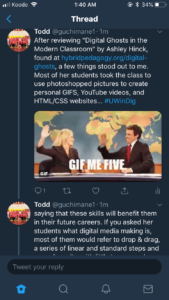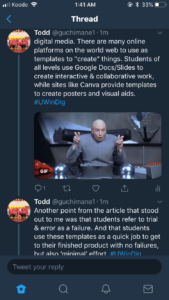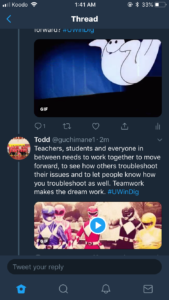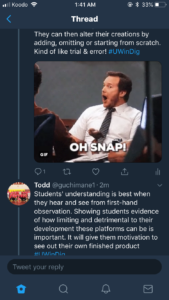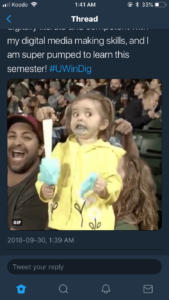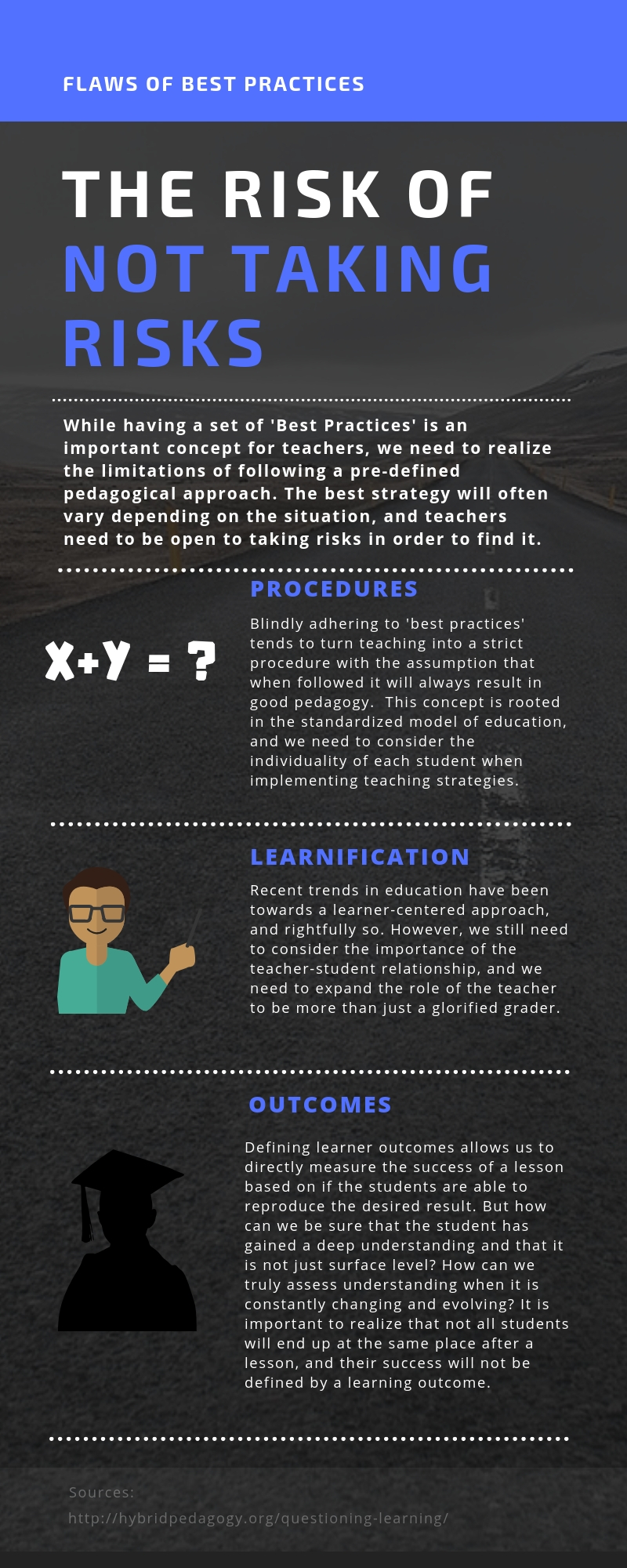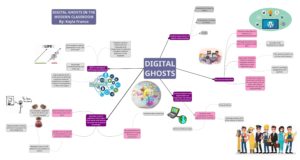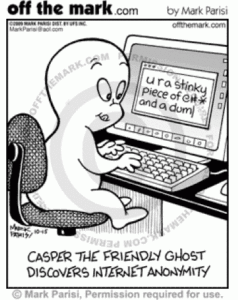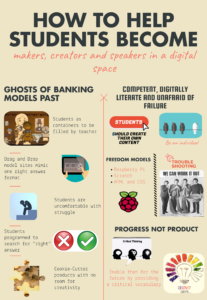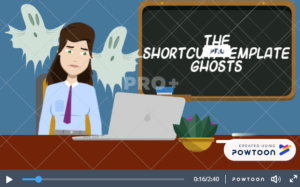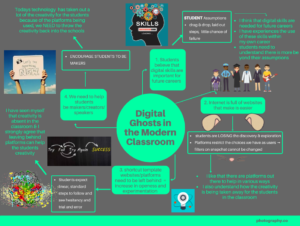I chose to read “Digital Ghosts in the Modern Classroom” by Ashley Hinck and I chose to use Canva to create an Infographic. In a nutshell, the article is about the dangers of linear thinking and processes in the classroom that limit digital literacy while also limiting making, development and creative thinking.
I chose the Infographic platform because I thought it would be fairly simple to use and I figured it was really just a mini poster and I have some experience making posters so I figured it’d be an easy platform as my first one. I also felt although there was a template made for me I could still modify the layout the way I wanted.
In reality, using this platform was simple to move things around apart from the fact that I was working in a small space I sometimes had difficulty selecting the correct box to edit (then I learned about the zoom feature). When it came to the creativity side of things I had to be a bit more creative, their frames would cut off my pictures and I couldn’t really adjust so I had to get creative and use a form of photoshop that I have to be able to create the look I wanted. Overall, I had a lot of fun making this and the challenge to making this artifact was that I had to condense the information presented from the article as much as possible to fit and then had to make it more visually appealing. My process consisted condensing these sections first in words and then see where I could remove the words and replace it with pictures. In the end, I think it turned out pretty well and it’s a nice snapshot of the information. I think this could be a great tool in the classroom to make it visually appealing and hit the main ideas.
Since there was restricted space it was difficult to put a full explanation or reflection. However, I have lots of space here. The student belief that internet is important for the future is valuable but their simple drag and drop one path fits all outline is not feasible for the jobs that we are preparing students for. I think I have adopted this one path mentality when it comes to doing assignments, probably from my own experiences as a student much like this article is outlining. Making the adjustment is important for students to be able to be makers, creators, and problem solvers. Taking this to the classroom I will encourage failures and successes to be able to stop this cycle. I will reduce worksheets and structured learning and increase their creativity to develop their own set of worksheets, and develop new ways of learning in the class.
Artifact (since Embedding it wouldn’t work) ?
- You’ll have to sign in . . .
- UPDATE: This platform is not sharing friendly!
- Just kidding it’s the WordPress that’s not nice; artifact below

